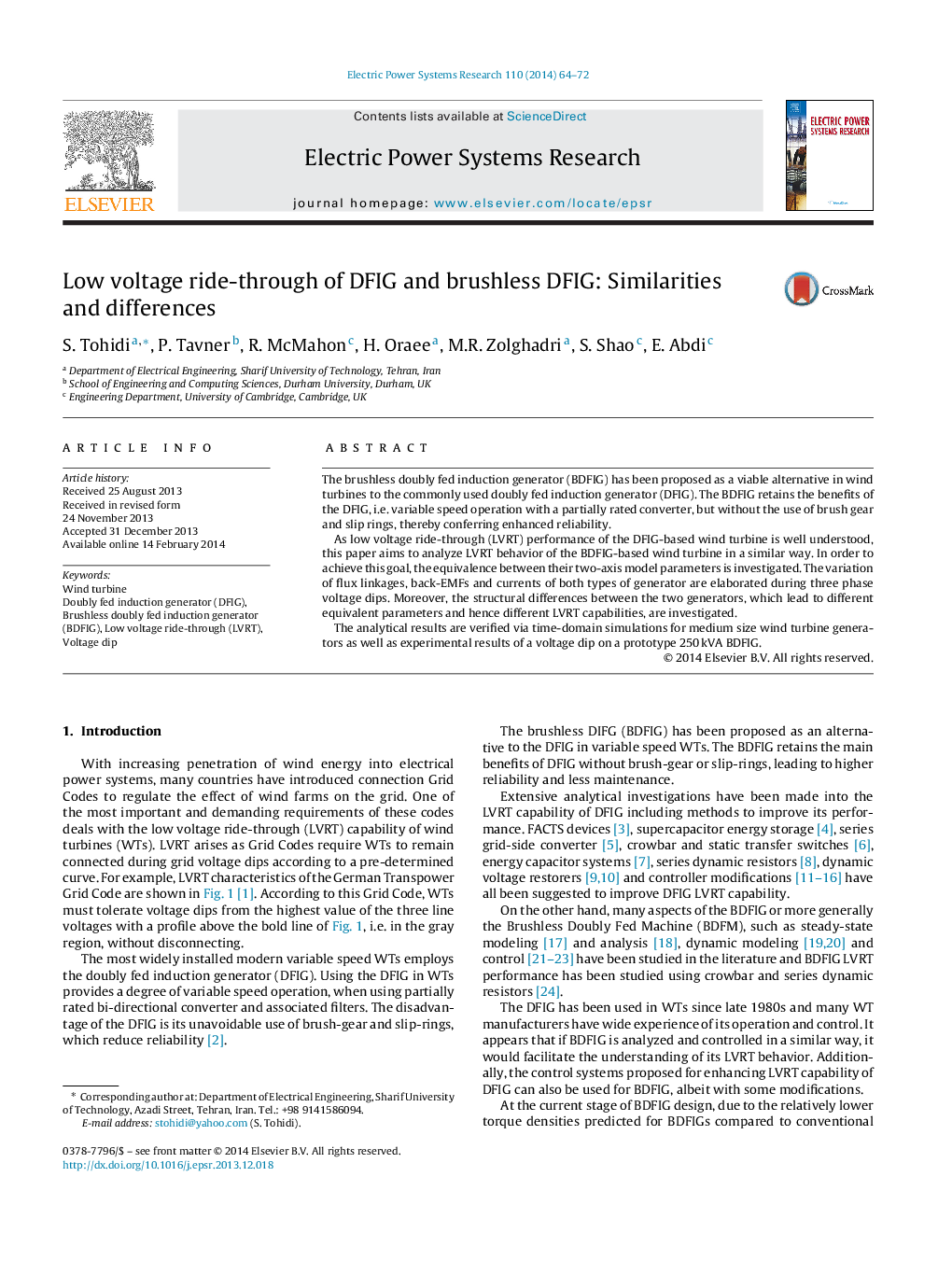| کد مقاله | کد نشریه | سال انتشار | مقاله انگلیسی | نسخه تمام متن |
|---|---|---|---|---|
| 703648 | 1460903 | 2014 | 9 صفحه PDF | دانلود رایگان |
کلید واژگان
1. مقدمه
شکل 1. منحنی LVRT کد شبکه قدرت انتقالی آلمانی
2. اصول DFIG و BDFIG
شکل 3. WT با BDFIG
2.1. مدل های دو محوری DFIG و BDFIG
شکل 4 کنترلگرهای DFIG (BDFIG): a) کنترلگر سرعت روتور؛ و b) کنترلگر توان واکنشی
3. تحلیل LVRT
3.1. LVRT DFIG
جدول 1. پارامترهای معادل DFIG و BDFIG
3.2. LVRT BDFIG
3.3. شباهت های بین LVRT DFIG و BDFIG
جدول 2. تعادل بین EMF های القا شده DFIG RW و BDFIG CW
جدول 3. مقایسه 250 kVA DFIG و BDFIG در هر واحد پارامترهای معادل
3.4. مقایسه بین پارامترهای DFIG و BDFIG
3.4.1. مقایسه عددی
4. شبیه سازی الکترو مکانیکی
شکل 5. افت ولتاژ لحظه ای پایانه ای اعمال شده
شکل 6 پاسخ های BDFIG و DFIG به افت لحظه ای ولتاژ 100 درصد
4.1. تاثیر مقاومت روتور BDFIG
5. اعتبار آزمایشگاهی
شکل 7. تاثیر مقاومت روتور BDFIG بر a) جریان PW، و b) جریان CW
شکل 8. دکل تست LVRT
شکل 9 نتایج آزمایشگاهی D400 BDFIG در معرض افت لحظه ای ولتاژ سه فازی: a) ولتاژ PW و b) جریان CW
6. نتیجه گیری
• BDFIG has been proposed as a reliable alternative for DFIG. However, its structure is more complicated than common DFIGs.
• As LVRT performance of the DFIG is well understood, this paper analyzes LVRT behavior of the BDFIG in a similar way.
• The analytical results are verified via time-domain simulations for medium sized DFIG and BDFIG.
• Experimental results of a voltage dip on a prototype 250 kVA BDFIG are also presented to validate analysis.
The brushless doubly fed induction generator (BDFIG) has been proposed as a viable alternative in wind turbines to the commonly used doubly fed induction generator (DFIG). The BDFIG retains the benefits of the DFIG, i.e. variable speed operation with a partially rated converter, but without the use of brush gear and slip rings, thereby conferring enhanced reliability.As low voltage ride-through (LVRT) performance of the DFIG-based wind turbine is well understood, this paper aims to analyze LVRT behavior of the BDFIG-based wind turbine in a similar way. In order to achieve this goal, the equivalence between their two-axis model parameters is investigated. The variation of flux linkages, back-EMFs and currents of both types of generator are elaborated during three phase voltage dips. Moreover, the structural differences between the two generators, which lead to different equivalent parameters and hence different LVRT capabilities, are investigated.The analytical results are verified via time-domain simulations for medium size wind turbine generators as well as experimental results of a voltage dip on a prototype 250 kVA BDFIG.
Journal: Electric Power Systems Research - Volume 110, May 2014, Pages 64–72
